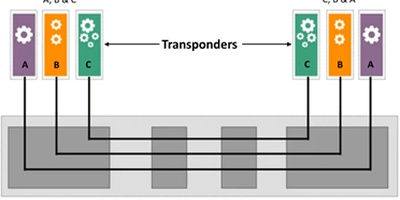Communications Software & Operations: Seven Predictions for 2021

2020 was a year of reacting for Communications Software, OSS/BSS, and operations, not planning, not dreaming, just reacting to the constantly changing environment:[1]
- CSPs scrambled to add bandwidth and access capacity for remote workforces and reworked their processes to remote their own work forces. SD-WANs increased greatly in size and implemented new features for work-at-home.
- Automation of simple network operations processes using simple low-code and no-code tools reduced some of the workload.
- Digitalization projects that were underway continued, at a slower pace, but few major new projects were started.
2021 will have a split personality: companies will have to get by as they have in 2020, but they will also be planning for the inevitable upsurge in economic and social activity as the world inoculates itself.[2]
Here are my thoughts on major trends and happenings in 2021:
- CSPs’ operations (as well as enterprises’ operations in general) will begin to fray. Our industry has been getting by for a while now, putting off routine hygiene of the network as we reworked our processes and kept up with surging demand. This will begin to affect the operations just as we as consumers become less willing to just get by and demand our historic higher levels of service.
- Tier 1 CSPs’ spending will continue its shift into OSSs for automating network operations to create networks requiring less human involvement in day-to-day operations. This will move investments away from BSSs (by a few percentage) where they have already spent much money in automating operations and implementing customer self-service (although Tier 2/3 CSPs are still in the BSS investment cycle).
- Network Function Virtualization (NFV) deployment will accelerate as CSPs find they can easily and quickly add capacity without dealing with the disrupted logistics chain. The concept of using general-purpose hardware will change with more specific hardware cloud-based computing and storage platforms that optimize the speed and efficiency of specific applications.[3]
- AI/ML will go mainstream, although most benefits will still come from automating simple processes with low-code/no-code robotic process automation and scripts.
- Disaggregated network elements (both horizontal, breaking into boxes along the communications link such as O-RAN and vertical, separating white-box hardware from software) will gain mind share and begin to gain significant market penetration, as it has already in the data center market.
- The autonomous network, as articulated by the TM Forum[4], will become the major vision for the future of network operations. Its concept of AI rich autonomous domain operations with cross-domain orchestration will be adopted by most CSPs and vendors.[5]
- Leading enterprises will accelerate their digital transformation projects, including their communications, computing, and storage infrastructures, but they will go beyond, building their software infrastructures up through the application level, making use of open-source technologies. Their competitors that do not want to invest in their own software development teams will see the leading-edge companies accelerating away from them and begin looking to vendors and systems integrators that can bring full packages from infrastructure through industry-specific applications.[6]
[1] For a more comprehensive review of the happenings in 2021, see my “2H20 CommSoft Insights Report.” https://www.acgcc.com/store/catalogue/2h20-commsoft-insights-report_19/
[2] See, for example,
https://www.economist.com/finance-and-economics/2020/12/08/the-pandemic-could-give-way-to-an-era-of-rapid-productivity-growth?utm_campaign=the-economist-today&utm_medium=newsletter&utm_source=salesforce-marketing-cloud&utm_term=2020-12-08&utm_content=article-link-1&etear=nl_today_1
[3] We are already seeing specific hardware being implemented in the cloud for running AI/ML applications efficiently (GPUs) and high-reliability uses for NFV (Intel’s NFV Reference Architecture). Oracle has been on this trajectory for several years already in its database products, running on specialized hardware in the Oracle Bare Metal Cloud.
[5] In preparation for this, my colleague, Paul (PJ) Parker-Johnson and I launched a new research program “Domain Control and Orchestration (DCO)” in 2020. See
https://www.acgcc.com/store/catalogue/domain-control-orchestration-landscape-report-2020_22/
[6] ACG Research anticipates that there will be a new conceptual way of bringing these digitalization technologies to businesses in a wide array of industries. CSPs will play a role to be determined; they will certainly provide the communications infrastructure, but some will do much more. We call this concept the “Intelligent Composable Fabric” that will allow a software 3-D printer to create customized digital platforms for businesses that chose not to build their own.



















































